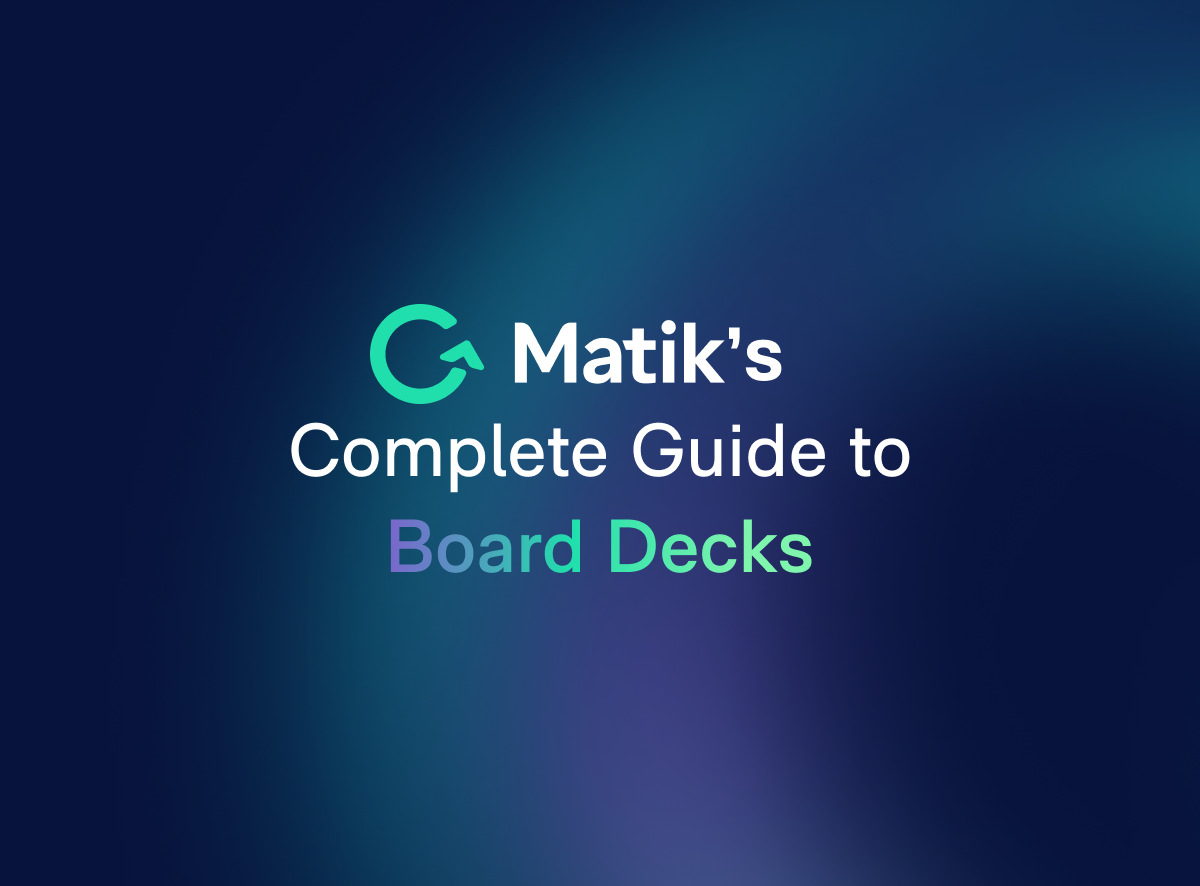Join Our Newsletter
If you help drive business strategy, you know that good data isn’t enough at the board level. True impact comes from delivering clear, focused updates and empowering leaders to make smart decisions. A well-designed board deck brings together your organization’s most valuable information so every board meeting delivers insight and drives progress.
What Is a Board Deck?
A board deck is a structured presentation that communicates a company’s key updates, financial performance, strategic initiatives, and challenges to its board of directors. It is your chance to highlight what matters most, spotlight challenges early, and align leadership on areas that will define your company’s future.
Why Board Decks Matter
- Drive strategic alignment: Keep leadership focused on the most impactful goals and initiatives.
- Show financial health at a glance: Instill confidence by showcasing revenue, expenses, and cash flow.
- Highlight opportunities and risks: Surfacing strengths and gaps helps leaders act before issues become problems.
- Accelerate decision making: With clear, concise data and context, boards can make faster, better choices.
Key Sections of a Board Deck
Here’s how to build a board deck that gets attention and sets the stage for effective meetings:
1. Agenda
Start with a simple outline of what will be discussed. This helps the board prioritize time and ensures everyone tracks with the flow of the meeting.
Common agenda items:
- Executive Summary
- Key Financials
- Pipeline Update
- Churn and Renewals
- Strategic Initiatives and Risks
2. Executive Summary
Open with high-impact highlights. Share major wins, product milestones, and the single most important priority for the next period. Think of this section as your headline—boards may rely on just this summary for their biggest takeaways.
3. Key Financials
Present essential metrics like quarterly revenue, expenses, gross margin, or cash on hand. Give context by comparing to previous forecasts or highlighting recent trends. If there are variances, explain early so the board is never left guessing.
4. Pipeline Update
Show the current state of your sales pipeline, what’s trending, and whether you are ahead or behind on targets. Highlight growth opportunities, key deals in flight, stalled stages, and any unmet revenue potential. This is the strategic heartbeat for growth planning.
5. Churn and Renewals
Summarize customer retention. List recent churn rates, renewal wins, and any major contracts at risk. Point out what is working and what still needs attention. This helps boards support retention strategies and minimize surprises.
6. Strategic Initiatives and Risks
Conclude by reviewing your highest priority projects and the most pressing risks. This could be a new market entry, a technology roll-out, or adoption targets for a product. Be transparent about obstacles so leaders can help clear roadblocks.
Example: Board Deck in Action
Picture you’re prepping for a quarterly board call as a SaaS company. Your executive summary leads with a new product milestone—AI auto-responder is now active for 65% of inbound requests. Revenue is up 14% versus last quarter. In your pipeline update, you call out strong performance in SMBs, but flag that expansion pipeline is lagging for enterprise. Churn rates are down, but two major accounts are marked “at risk” due to competitor activity, so you highlight mitigation plans.
In strategic initiatives, you spotlight the rollout of a self-service analytics dashboard in Q3 and the beginning of a regional trial in APAC. Your risks section covers reliance on a single cloud provider, for which a disaster recovery plan is underway, and low AI feature adoption in one segment.
Final Thoughts
An effective board deck shines a spotlight on what matters, turning updates into action and helping leaders make better decisions, faster. By keeping the focus on outcomes, risks, and clear next steps, you’ll ensure every meeting is strategic and impactful.
Ready to get started? Use this template as your blueprint for building better board decks that make every leadership meeting count.
---
Looking for a customizable board deck template? Matik makes it easy to generate personalized, data-driven presentations that wow your board. Request a demo today.













